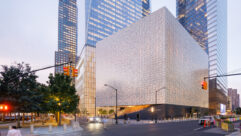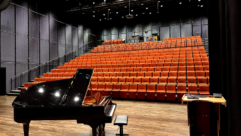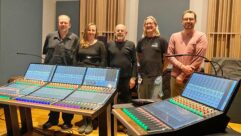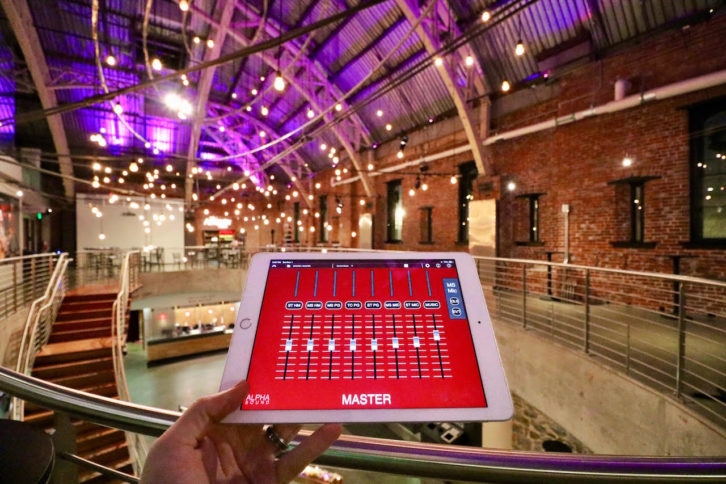
At the Portland Center Stage Theater (PCS) they had patched and patched the sound system to keep it going for the wide variety of simultaneous events that go on in the complex. Finally, the building had to have a completely new solution. Alpha Sound in nearby Salem, Oregon came in with a Nexo/ Yamaha sound system that can handle anything the schedule can throw at it. In the process, PCS also got an ambitious, building-wide networked paging system over four floors. Lead design and installation technician Devin Sheets is going to give us the lowdown on how it all went.
SVC: Tell us about Alpha Sound. How did that outfit get started and what got you into sound installations?
Devin Sheets: Alpha Sound has been in business for 40 years. It was started by my father, Duane Sheets, our company president. We’re located in Salem, Oregon and we mainly service the Pacific Northwest, but on occasion extend around the country. We’ve even recently done some work abroad in Spain, Germany and Switzerland. The nature of the company has changed a lot through the decades. It began as a recording studio, which turned into a retail music store. And the live sound division really took off in the late ‘80s and ‘90s. At one point in the mid-‘90s we actually had the largest EAW 850 rig west of the Mississippi. In the 2000s we became a fully exclusive Yamaha/Nexo house and really switched our focus toward a combination of installations and corporate work. We still enjoy doing our annual festivals and the occasional rock show, but for the last 20 years now the company has been known as a kind of boutique outfit. We take on a limited number of projects that we mostly enjoy doing and that we know we can do uniquely well. For example, we’ll take on a highly creative and experimental project like amplifying classical music outdoors and in surround sound. We’ve invented a number of proprietary techniques to help push the boundaries of what is possible to achieve through live amplification, and we really view modern microphones and speakers as kind of the next great tool in the advancement of the musical arts.
It’s great that you can do the types of projects you most enjoy doing, like this install in a unique place called the Armory. What kind of place is it?
The Armory is a historic building in downtown Portland that has been converted into a multifunctional theater venue. It’s known as Portland Center Stage Theater, or just PCS. There’s a main theater and also a secondary smaller theater downstairs, various rehearsal halls, offices, and it also has an amazing set of lobby areas that get used for independent events.
What kinds of events do they have there? Is it all theatrical?
It’s mostly theater-related events, but there’s a fair amount of usage for corporate events and parties and whatnot. Almost every area of the building is being used on any given day. It’s not uncommon for there to be multiple events happening at once.
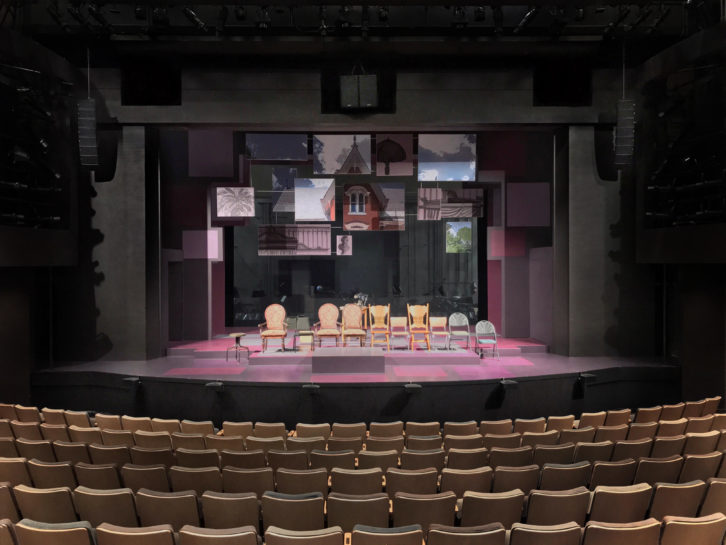 And they probably don’t have a huge tech crew there so everything has to be reliable. What things were they aiming to fix with this project?
And they probably don’t have a huge tech crew there so everything has to be reliable. What things were they aiming to fix with this project?
We’ve had a long relationship with PCS; renting them equipment for shows and helping to improve their sound in various ways within budget constraints. It was a typical situation where the system was comprised of multiple layers of Band-Aids just to try to get by as components would fail. It was hard to hear and understand the vocals at times, especially in a heavy mix of instruments and content. Their resident sound designer, Casi, had done an incredible job of making the system that she was given work at its best. But when she was able to get them to demo some Nexo line arrays in there, that really pushed them to reevaluate the entire situation with their sound. After really hearing what it could sound like with new equipment, it was hard to go back. And after that we were asked to come in and do the full installation. A lot of that was due to Casi’s influence. She really pushed hard for that demo. They’re lucky to have her.
And the Nexo advantage was what?
Nexo provides a simple but very powerful software program for venue system design and acoustic prediction. Actually, the design process was really simple. Nexo only makes a few products, but each one, I think, is probably best in its class. So we spec’d an M6 line array mainly because it was small, and also put in some PS15 speakers for a center cluster. For amplification we used the NX amplifiers that were actually designed by Yamaha and Nexo together. So if you think of a regular amplifier as a rotary phone, these amps are like smart phones. When you plug in a Nexo speaker, the amp knows every last little thing about that speaker and has some really interesting ways of gathering real-time data about how the speaker is behaving. So their protection algorithms are extremely sophisticated and you can really get the most out of the speaker from an SPL standpoint without really sacrificing any audio quality or worrying about causing serious damage to the speakers. It’s great in situations where you have guest engineers coming in and who knows how hard they’re going to push the systems? With the Nexo stuff you just know it will always sound great and it will last a long time.
One of the critical spots on any system like this is where the human operators and the system hardware meet. Of course, that’s at the control point and in this case it’s a Yamaha QL5 digital mixer.
Yeah. The Yamaha consoles are very intuitive and easy to configure. Casi really wanted to have the full range of flexibility and features that a digital console brings to the table, especially with the Dante networking which is taking the industry by storm – and for good reason. The console is also priced really well in the market for what it will do and how it will sound. That’s a big reason why we chose it. Yamaha also has incredible tech support. They’re really interested in making sure that their products not only get sold, but then also work and sound their best in the field. As far as the users go, it’s really nice having 32 faders all right in front of you with, of course, the full 64 channels a button away, and four customizable fader banks with a nice big touch screen. Thirty-two mic pres on the console itself as well as the full Dante capability, I mean it’s a lot packed into a console of its size. And they’re super-reliable. We’ve never had a console crash during a show or really ever had any serious glitches or problems.
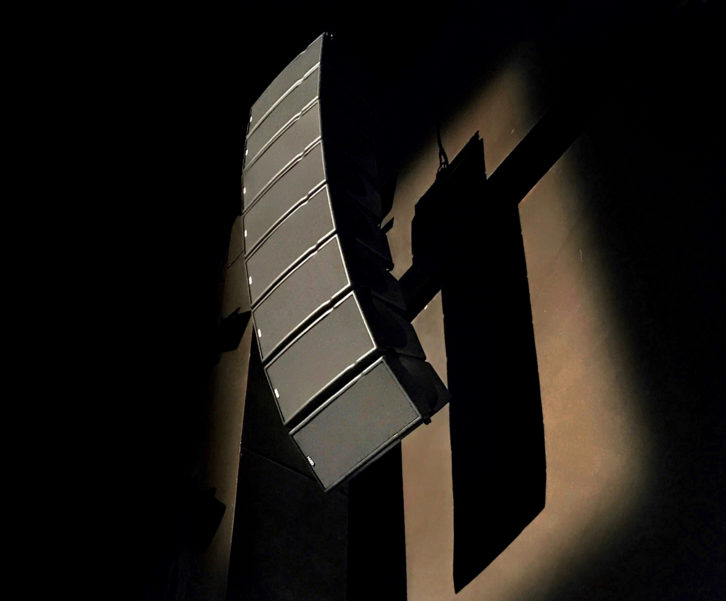 So when you got this all rigged and hung and the sweat work was done, how did you go about tuning and tweaking the system?
So when you got this all rigged and hung and the sweat work was done, how did you go about tuning and tweaking the system?
You know [Chuckles], I used to use a lot of software to tune systems but these days I use my ear. And every once in a while I bust out the software when I’m trying to do experimental work or some serious troubleshooting. I’ve actually found that there’s a discrepancy between the sound of systems which have been tuned to be perfectly flat and then the way that I end up tuning the system after actual use. So I always give the client an A/B comparison of the work I’ve done and then let them choose which tuning they think sounds the best, and so far I’ve not had anyone tell me they like the traditionally flat tuning better. So I’ve pretty much moved away from that method and just rely on my ears.
For the main theater, where are the mixer and the main racks located and how is the mixer output carried to the speakers?
The mixer is located at the back of the house, out in the open air. I’m a firm believer that the front of house engineer needs to be in the same acoustic environment as the audience. The equipment racks are located off to the side of the stage and there’s a Yamaha MTX matrix processor that the console communicates with through Dante, and then from there goes to the amps analog. There are some really cool Dante cards you can get for the amps, but that just wasn’t in the budget for now
And for the installation, how did all of the rigging and flying of the speakers go?
Actually the rigging on almost all of the Nexo equipment is unbelievably simple. We got the whole thing done in about a day, which is pretty normal for an M6 install. We built the arrays on the ground and pulled it up with a temporary motor and transferred it to the hanging point. We do a lot of church installations where we have to be done with an entire install well within a week because they have services. So this wasn’t a problem for us.
They also needed a building-wide paging system which Alpha Sound installed. Can you describe that?
Yeah, this is a big project. The theater has four different floor levels and each level has a dozen or so locations which need to hear some combination of eight different input sources which range from paging microphones to ambient microphones and music playback. And at each location what they need to hear changes drastically depending on what’s going on. For example, an office room might be used by the director of a show in the main stage on Monday, but on Tuesday it’s being used by the director for a show in the basement. And next Monday it will be used by still someone else. So, we put an MTX unit on each floor level to service the range of ceiling and hallway speakers that they already had throughout the place. There’s CAT6 cable running between each floor level to all the units connecting them on the Dante network, and we put an MRX-7 processor in the mix because it has an open design architecture as opposed to the fixed architecture of the MTX-5. So all eight input sources initially passed through the MRX-7—because I can really get in there and twist the thing into a pretzel and set up all manner of routing and ducking procedures and pretty much anything I need. And then the finalized audio gets piped out via Dante to the other units around the building which then are controlled with iPads running the ProVisionaire Touch app from Yamaha. So anybody at any time can grab an iPad and adjust exactly what they need to hear in their corner of the building.
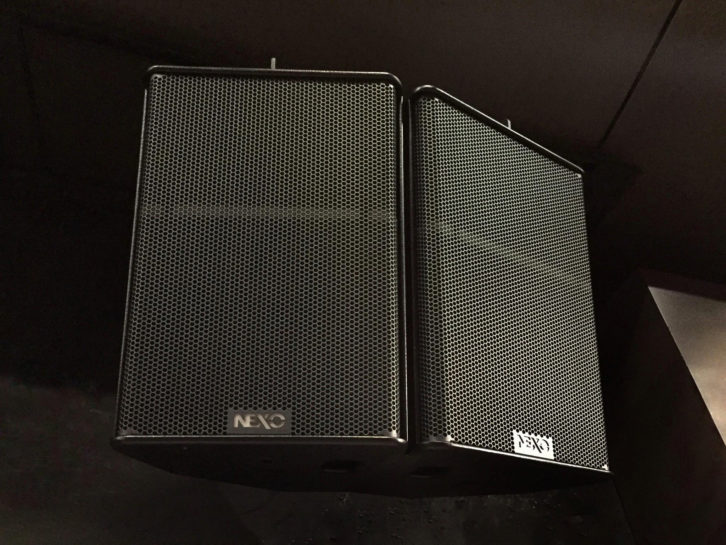 And they can do this in the main theater too right?
And they can do this in the main theater too right?
Absolutely.
That would come in so handy in the bigger theater so that in setting things up and tweaking the sound you wouldn’t have to run to one place to listen and run back to the mixer to adjust it and back and forth. How does the wireless iPad control work with Yamaha’s ProVisionaire Touch app? That’s got to be fun to use.
Yeah. The iPad functionality is really what makes this system worth the money. I can design a completely customized app for every client. It looks amazing. You can choose your own backgrounds and pages and you have a wide range of faders and buttons and meters that have lots of different styles and layouts. And then you just hop on the Wi-Fi network and it goes and finds the units and away you go. You know Yamaha also makes physical wall panels and things you can use, but the tablet option is just so convenient. And now there’s even a mobile app which mimics the wall panel so it’s just amazing.
What’s been the reaction for visiting engineers coming in? Is there any initial concern when they see these small speaker arrays and figure it might not have quite the punch they need?
Yep. This has been a rather consistent thing for the past 20 years. We’ll come in with the Nexo line array and the client asks, “Uh, where’s the rest of the PA?” And we always tell them, “No, no. Just wait until you hear it.” And without fail when we crank the thing up everybody smiles. It’s just so deceptive how much sound can come out of such a small package and sound bigger and smoother and more present and more dynamic than speakers many times their size. Casi loves it and she’s told us that the feedback from the guest engineers has just been really, really positive.
I noticed that the system includes a number of those very small ID24 speaker enclosures. How did you use those?
Yeah, those are fun little speakers. They’re smaller than a shoebox and they’re just perfect for front fill, side fills, even stage monitors. You can even rotate the horn dispersion patterns by turning a knob on the back.
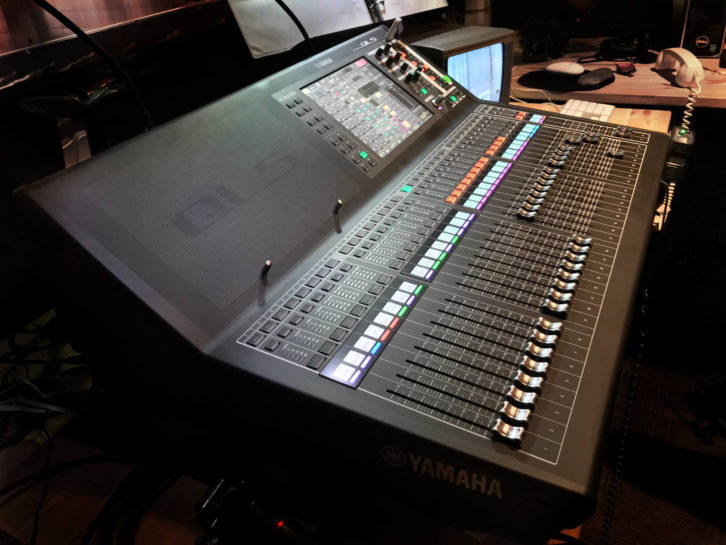 With theatrical performances they’ve got to be using lots of playback so what kinds of Dante-enabled peripheral devices do they use?
With theatrical performances they’ve got to be using lots of playback so what kinds of Dante-enabled peripheral devices do they use?
Oh, they’ve got a bunch of Shure wireless units on the Dante and QLab. People can bring in their laptops and hop on the network and instantly have 64 input and output channels to play with. You know the network itself will support a thousand channels of audio between the devices.
That sounds like a hugely ambitious project that leaves them with the versatility they need for all those different events. I would think the ability to do quick and easy reconfiguration would be important.
Yep. Absolutely. And the thing is you have to be able to utilize the system whether you are a sound technician or whether you’re just someone working in an office. The system has to be designed to be able to be accessible to everybody and it is.
So what do you have coming up next?
Well, we’ve got a pretty regular schedule, mostly houses of worship, and hopefully more theater work. This was a really successful install and there are a lot of theaters in other buildings out there that could really benefit from this technology. We also continue to work on our proprietary methods. You know there’s a lot of free content that we put out on our Facebook page and web site and YouTube; industry tips and tricks. And I’ve written some articles which you can find in the Notes section on our Facebook page. Just search for Alpha Sound of Oregon. We have a really cool piano microphone system we’ve developed and some great videos on cardioid subwoofer technology. There’s all sorts of good stuff on there. One of the things to keep an eye out for is our involvement with classical music in Oregon. We’re working with a number of orchestras, choirs and other ensembles to really usher in the next great step forward for performance technology, which we believe will intimately include live amplification. So lots of exciting stuff.
To listen to the PODCAST


